Caperonia palustris
Euphorbiaceae
Good times this autumn exploring with the PBSC Horticultural Taxonomy class, focusing this go-round on exotic species. One which seems to be severely under-studied, is a member of the Spurge Family related to Crotons and to last week’s Corkwood. False-Crotons, species of Caperonia, are easy to overlook, hairy-itchy, growing inconveniently in places humans don’t routinely stroll. They cry out for interpretation.
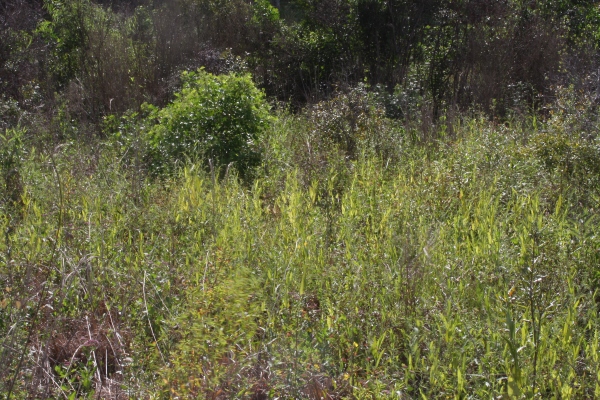
False-Crotons in retention pond
We have two Caperonia species in Florida. They have generated confusion and disagreement, as recently as the 1960s with it unclear if we have two species or merely one, with the resolution being Caperonia castaneifolia, with hairless stems seems to be native, and C. palustris, bearing glandular-hairy stem, is an invasive exotic first reported in the U.S. in Louisiana in 1913 by Ivar Tidestrom. Ivar was a government botanist who lived his later years in Florida, and was botanically active into his 90s. Tidestrom illustrated his 1913 report with a beautiful drawing, inserted below, dating to approx. 1730.
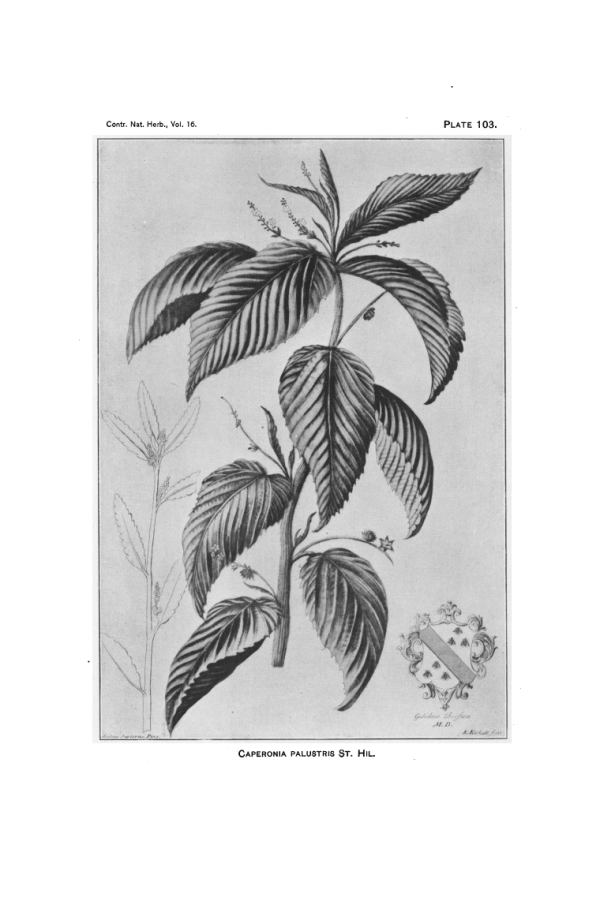
From Tidestrom 1913, first published approx. 1730.
If you want a textbook example of serrate (sawtooth) leaves this is it.
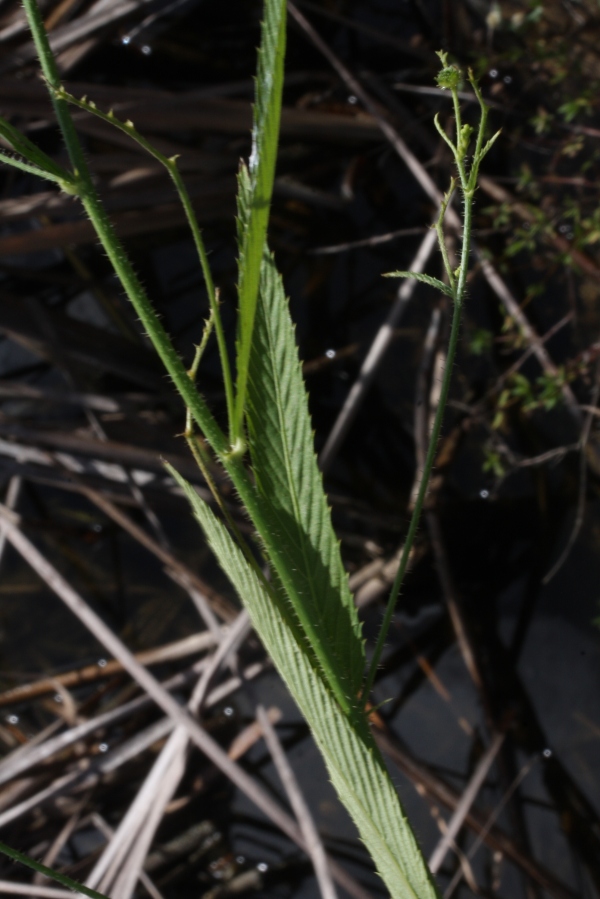
The leaves. Serrations are probably an adaptation to enhance gas (and heat?) exchange.
This species is adapted to intermittent wet feet. Palustris means of the swamp, such as in ditches and water retention ponds. Its paddy-happiness makes normally genial rice growers cranky with worry about its spread. Rice-related research has shown C. palustris to scoff in the face of control-by-flooding. Rising waters make it grow insolently taller, and it adds “prop roots” like a miniature mangrove, as well as spongy tissue (aerenchyma) around the base. The related C. castaneifolia reportedly has a white covering on the seeds, perhaps an adaptation to floating.
The remarkable feature of False-Croton, and the reason it deserves more study, is the flower arrangement: the flowering stalk has a few female flowers at the base and usually more numerous male flowers above. That is, it is monoecious, no big deal, a situation commonplace in the Spurge Family, including last week’s species, as well as Castor Bean and, to be seasonal, Poinsettia. More curiously, the male flowers are flamboyant with long white petals. The females, by contrast, are modest with stubby little petals, or apparently sometimes none. Female petal-envy occurs in other plants, including Jatropha integerrima, so popular in local gardens.
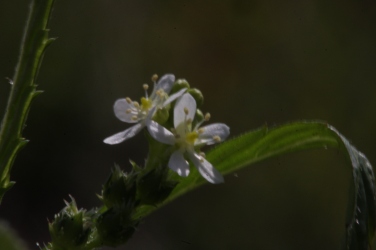
Showy male flowers. Green females to their left.
In Caperonia the difference is striking, and here’s the puzzle. If the usual purpose of flowers is to attract insects to carry pollen from male stamens to female pistils, shouldn’t the females draw pollinators equally effectively in order to connect the sexual dots? Why draw buggies to the males but less so to the females? Mission incomplete!
This needs study. When there are differences between male and female flowers in the plant world, the males tend to be larger and showier. This may be in part because the females devote more biomass to ovaries, fruits, and seeds, but that is not a very satisfying explanation. Could it be that the flaglike male flowers draw visitors from afar, and once visitors are at hand the female flowers close the deal?
Maybe the female flowers use short-distance attractive methods after the long-range males draw a crowd. Perhaps the females have scents. They are covered by glandular hairs which might interest visitors (recorded guests include bees, wasps, and flies). The female stigma cluster glistens. And there are sometimes petals, if merely small ones.
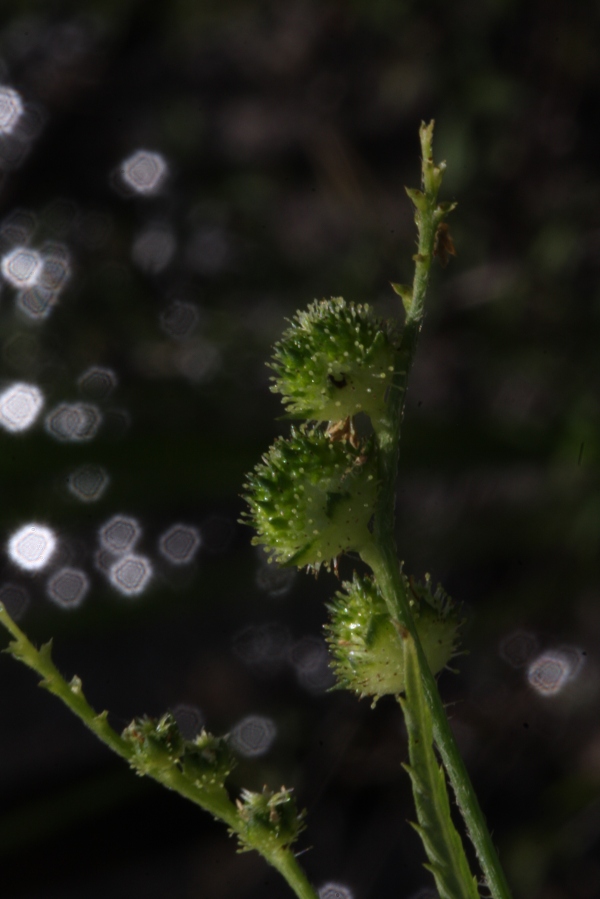
Un-showy female flowers (developing into fruits on the right.).